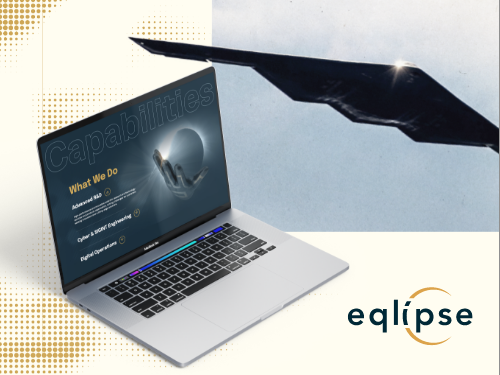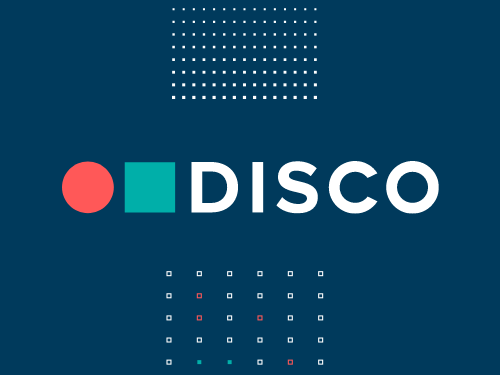Have you ever considered buying a product or service only to be reminded of that product at every click of your web browser? This is most often seen in e-commerce scenarios, where online shoppers can’t seem to escape a heavy volume of ads around a product they have recently browsed. This is a common digital marketing tactic known as retargeting. While retargeting campaigns can get to the point of aggressive outreach (you know what I mean if you’ve ever felt taunted by that beautiful pair of shoes you never pulled the checkout trigger on), there is an artful way to retarget website users in a B2B (business-to-business) capacity.
Let’s Start With The Basics: What Is Retargeting?
Retargeting advertising refers to unique online ad placements served only to people who have already visited your website or are a contact in your database (such as a lead or customer). As opposed to traditional display ads, these ads are served to people who are already familiar with your brand or products. This allows the user the opportunity to bypass the education phase and jump straight into key reasons to engage or purchase now. Creative and messaging can be more confident, punchy, or urgent as you’ve already established a base relationship with these viewers. It’s similar to a second or third date; you get to skip the “getting to know you” fillers and jump straight into deeper topics.
The most common type of retargeting is known as pixel retargeting, meaning whenever a user comes to your website a piece of JavaScript (aka the pixel) is placed — making their browser “cookie-d.” Now this is one smart cookie, as when the user leaves your site, that cookie notifies retargeting platforms to serve specific ads based on the specific pages they had previously viewed. Pixel retargeting is the most timely, as the user is entered into the retargeting pool immediately and can be categorized based on specific page views or site interactions. The other type of retargeting is list-based, which refers to the manual upload of contact information based on sources outside of website traffic. This method requires more effort for manual configuration, but more control to create hyper-specific campaigns based on behaviors or criteria outside of website behavior. For example, maybe you want to retarget a group of prospects gathered at a recent trade show with a follow-up advertisement.
What Are The Benefits of Retargeting Campaigns?
The benefits of retargeting ads include much higher ROI (return on investment) and the chance of conversion, as viewers have already entered the funnel. So now the question is what steps can you take to fully capitalize on retargeting opportunities?
- Determine Goals: First and foremost, you’ll need to determine the goals of your campaign as this will affect your ultimate retargeting strategy. Whether your company’s objective is to generate leads, increase conversions, or drive brand awareness, a singular goal should be defined from the start.
- Audience Segmentation: You’ve already split your full target audience into two key groups: new prospects and retargeting leads. Now you have an opportunity to further drill down your retargeting segment based on information you have gathered from these users. Because they have visited your website or engaged with the brand previously, you’re in an optimal position to serve them more personalized and relevant ads. Say a user engaged with the website only once before, you may want to serve them a more subtle nudge to re-engage and explore more. For a user that has engaged in multiple events (clicks, form fills, sessions), you can serve them more urgent action-oriented content.
- Frequency: This is where you want to be extra cautious of ad fatigue and avoid over-serving ads to a user, as they will likely become overwhelmed and off-put by your brand. The key is to speak softly but carry a big message. Frequency caps allow you to limit the number of times an ad is served to a particular user within a certain time frame. In Google Ads and most other programmatic or DSP platforms, you can specify the number of impressions per day, week, or month. Operating on days will allow the most control over ad frequency and minimize the risk of ad fatigue. For social media advertising, Meta enables frequency settings for ad impressions that are available only for advertising campaigns with “Reach and Frequency” buying, or the “Reach” advertising goal.
- Dynamic Targeting: The beauty of a retargeting campaign is that you are not starting from zero. You have obtained some information on what a user is interested in or has historically browsed on your website. For example, if a user visits the landing page of Product A, you can serve them an ad specifically promoting that product rather than your full portfolio. On the contrary, if your user has engaged with a number of landing pages and visited the website frequently, you may want to promote the full suite of products and more urgent calls to action.
- Compelling Creative and Copy: As we mentioned before, retargeting campaigns offer the greatest opportunity to expand your company’s official tagline or boilerplate. Because users have already been introduced to the brand, you can experiment with unique visuals and messaging catered to specific interests or needs. You can even A/B test different ad creative and copy to help identify what resonates best with your audience.
Now that you’ve established your campaign objective, target audience, and core content, it’s time to optimize your bid strategy to make the most of your ad dollars.
Optimizing Your Retargeting Campaigns Bid Strategy
One of the most crucial ways to generate success from retargeting campaigns is by selecting the right bid strategy. This will increase campaign effectiveness by strictly limiting the cost of click/conversion.
Within all advertising platforms, there are two main options for bidding:
- Auto: An automatic bid strategy is similar to placing your car on cruise control. It means that the system will try to get the highest possible number of clicks/conversions within the established budget and determined performance targets. When setting up your ads you can assign a goal value, for example, the cost per click. In this case, the system will try to maintain this cost and pace the placements to not go over budget.
- Duration: In most advertising systems, you can specify how long a user will be included in your retargeting audience. In Google Ads and Meta, the default setting is 30 days, but you can customize this number to suit your needs and historical trends. For example, if your GA4 insights show that 90% of conversions occur in the first 7 days after the visitor first visits the site, there’s a much lesser chance that a given user will convert 30-40 days after visiting the site. Therefore, it may be more cost-effective to restrict retargeting to users for more than 7 days. You may find higher conversions and lower CPC (cost-per-click) by changing the membership duration from the base 30 days to 7 days. Be sure to actively monitor campaign performance and results for at least a few weeks and be willing to pivot based on what you find is or isn’t yielding results.
Overall, retargeting campaigns are one of the most cost-effective methods of increasing conversions and reaching relevant prospects. The chances of conversion are much higher when that base foundation of knowledge within your brand has been established, and it gives you the chance to create highly customized advertising campaigns. However, there’s a lot to consider in setting up and optimizing your retargeting campaigns. That’s where a digital marketing agency can assist in strategy, placement, and ongoing monitoring for optimization opportunities. Contact Bluetext if you’re ready to retarget and set your campaigns up for success.


